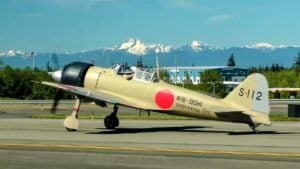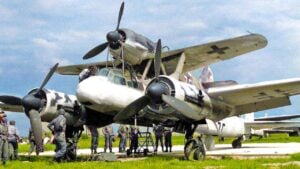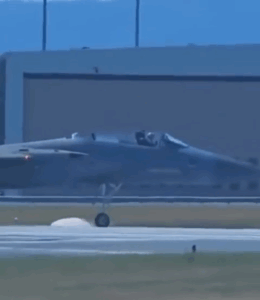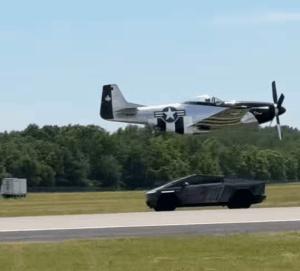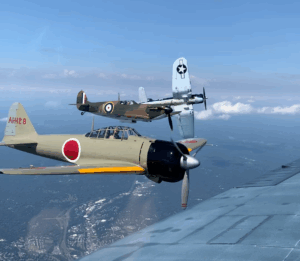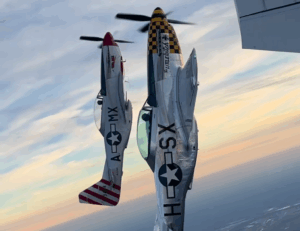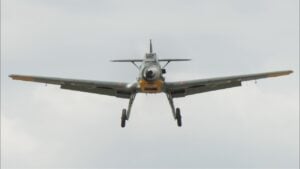What If a Modern Bomber Fought at D-Day?
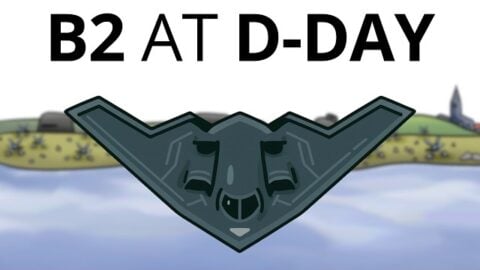
YouTube / Last Brain Cell
On June 6, 1944, Normandy’s beaches are fortified. German bunkers are loaded with machine guns, artillery, and 50,000 Axis troops waiting for the invasion. The Allied plan? Overwhelm the coast with 150,000 soldiers, thousands of ships with wave after wave of bombers.
However, what if, in the middle of the operation, something appears from the future – a B-2 Spirit Stealth Bomber. Still, pilots inside, no backup, no modern support, just one crew, one aircraft dropped straight into WWII?’
What Now?
No one on the ground has seen anything like this aircraft. Neither the Allies nor the Germans don’t know what it is. What happens when a 21st-century stealth bomber shows up at the most heavily defended beaches of WWII?
This is only a one-time strike, and everything depends on how the aircraft is used. How much chaos can one stealth bomber unleash? This jet black flying wing, nearly invisible to radar, powered by four engines and crewed by just two people, is one of the most advanced stealth bombers ever built.
At full capacity, it carries 40,000 lb. bombs, modern GPS-guided JDAMs built to hit within a few feet. It also flies up to 50,000 ft. well beyond the reach of most WWII defenses and cruises at 560 mph. It also isn’t a fighter, so it has no guns, no missiles, and no way to dogfight. It’s built for one thing only- getting through defenses and erasing them from the map. Its range is over 6,000 nautical miles unrefueled, enough to circle Europe and head home.
Ghost of the Future?
What happens if this plane from the future arrives in Normandy? The German systems are primitive, built to detect slow-moving propeller planes, not something flying at 50,000 ft. coated in radar-absorbing material. Communication is also slow, often wired, and intelligence days behind. The Germans are watching the horizon for ships, not scanning the sky for an invisible bomber 50 years from the future.
Could the B-2 wipe the beach clean before the first Allied soldier even hits the sand? The B-2 is nearly invisible to the naked eye and basically undetectable to 1944 radar. Just a clear sky and explosions as JDAMs fall from the stratosphere, built for precision. However, that precision depends on GPS, and there was no satellite network in 1944. So, if the crew preloaded coordinates before jumping through time, the bomb will still hit. If not, then they have to rely on internal inertial navigation and visual cues. Inertial navigation can be accurate over short distances. Meanwhile, visual targeting is another story. From 50,000 ft., even on a clear day, spotting bunkers or gun positions can be difficult. Add bad weather and unfamiliar terrain, and some bombs will miss the target.
Can The Flying Phantom Change the Outcome of D-Day?
Despite all of that, it’s chaos from below. Vital gun nests vanish, craters tear through concrete bunkers, flak crews never get a chance to fire, and radios go silent. The chain of command melts into panic. However, the B-2 can’t stay invisible forever. Its stealth buys time, not unlimited power. Every bomb dropped is one that can’t be replaced. Can it really change the tide of the war?
Let’s say the B-2 hits its marks; that kind of precision strike can save hundreds, if not thousands, of Allied lives. However, the B-2 isn’t a magic wand. Even with the best bombing run in history, beaches are still lined with barbed wire, mines, snipers, and hardened bunkers. There are also some defenses that are buried deep or hidden behind terrain.
Also, Allied commanders aren’t expecting a futuristic jet. If they don’t know it’s friendly, the bomber might trigger confusion, or worse, panic. So, while the B-2 can soften the beach and scatter he defenders, soldiers still have the storm the beach. To German troops, the attack is basically invisible. While the B-2 bomber can hit dozens of fortified targets, confuse German command, and soften the beach for Allied troops about to land, it still wouldn’t win the war.
It’s one jet, one mission, one payload. As soon as the bombs are gone and fuel runs low, it’s finished. It enters the war like a ghost and disappears just as fast. However, in that brief appearance, it might save thousands of lives, bend the timeline, and leave every surviving soldier German or Allied, staring at the sky, wondering, “What the hell was that?”














